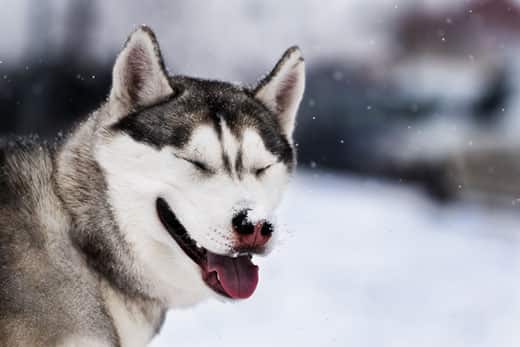
-
Find the right food for your pet
Take this quiz to see which food may be the best for your furry friend.
Find the right food for your pet
Take this quiz to see which food may be the best for your furry friend.
Featured products
 Small & Mini Savory Stew with Chicken & Vegetables Dog Food
Small & Mini Savory Stew with Chicken & Vegetables Dog FoodA delicious complement to the nutrition of Science Diet Small & Mini 7+ dog food
Shop Now Adult 7+ Perfect Digestion Chicken, Whole Oats & Brown Rice Recipe Dog Food
Adult 7+ Perfect Digestion Chicken, Whole Oats & Brown Rice Recipe Dog FoodScience Diet's breakthrough nutrition supports ultimate digestive well-being & healthy microbiome for dogs age 7+
Shop Now Adult Healthy Cuisine Roasted Chicken, Carrots & Spinach Stew Dog Food
Adult Healthy Cuisine Roasted Chicken, Carrots & Spinach Stew Dog FoodDelicious roasted chicken paired with tender vegetables in a succulent stew
Shop NowFeatured products
 Adult Savory Entrée Can Variety Pack Cat Food
Adult Savory Entrée Can Variety Pack Cat FoodPrecisely balanced nutrition with the delicious taste of savory minced chicken to help fuel the energy needs of cats during the prime of their life
Shop Now Adult 7+ Senior Vitality Chicken & Vegetable Stew Cat Food
Adult 7+ Senior Vitality Chicken & Vegetable Stew Cat FoodImproves Everyday Ability to Get Up & Go
Shop Now Adult 7+ Tender Tuna Dinner Cat Food
Adult 7+ Tender Tuna Dinner Cat FoodWith delicious chunks in a decadent gravy
Shop Now -
Dog
- Dog Tips & Articles
-
Health Category
- Weight
- Food & Environmental Sensitivities
- Urinary
- Digestive
- Joint
- Kidney
-
Life Stage
- Puppy Nutrition
- Adult Nutrition
- Senior Nutrition
Cat
- Cat Tips & Articles
-
Health Category
- Weight
- Skin & Food Sensitivities
- Urinary
- Digestive
- Kidney
-
Life Stage
- Kitten Nutrition
- Adult Nutrition
Featured articles
 Does My Pet Hate Me?
Does My Pet Hate Me?Learn tips for bonding with your pet if you've ever thought, 'My dog doesn't like me, or 'Why do I have a standoffish cat?'
Read More Why Are Dogs and Cats So Cute?
Why Are Dogs and Cats So Cute?If waggy puppy dog tails and furry kitten yawns make you swoon, you're not alone. Why are cats so cute? And, dogs too! Let's find out!
Read More Do Dogs and Cats have Belly Buttons?
Do Dogs and Cats have Belly Buttons?Learn whether cats & dogs have belly buttons like humans, what the function is, and if there are any health concerns associated with it.
Read More -


Do you have a dog whose nose turns pink as the weather outside gets colder? If so, your dog might have what is commonly referred to as snow nose. But cold weather isn't the only reason some dogs' noses turn pale. Want to know why dogs' noses turn pink, and whether it is something you should worry about? Here's what you need to know.
What Is Snow Nose?

Snow nose is a common term for a dog nose that's loses pigment and turns from black/brown to pink. Typically, this either appears as spots or as a stripe down the center of the nose, says Life In the Dog Lane.
Dogs are more likely to get snow nose during the winter or in cold climates. However, snow nose isn't limited to dogs in northern climates, as was once believed. It's usually temporary, with pigment returning to normal once the weather warms up. But as dogs get older, their snow noses sometimes stick around all year.
While snow nose doesn't seem to be restricted to certain types of dogs, some breeds are more likely to get it than others. Snow nose most commonly occurs among Siberian huskies, Labrador retrievers, golden retrievers and Bernese mountain dogs — all breeds that are originally from northern climates.
Why Do Dogs' Noses Turn Pink?
No one knows for sure what causes snow nose. One possible explanation is that it's caused by the breakdown of tyrosinase, the enzyme that produces melanin, or skin pigment, says Cuteness. Tyrosinase is sensitive to cold temperatures and also tends to break down with age. This fails to explain, however, why snow nose only occurs in some dogs and why it can also affect dogs in warmer climates. The answers to these questions remain a mystery.


Tasty Tips
Should You Worry If Your Dog Gets Snow Nose?
Snow nose doesn't need to be treated by a doctor any more than gray hair in humans needs to be. And there's no way to restore lost pigment to your dog's nose. That said, melanin helps protect your dog's tender nose from sun damage. Without this natural protection, you'll need to limit your dog's sun exposure or apply a dog-friendly sunscreen to their nose before they go into the sun.
And while the exact cause of snow nose is unknown, some veterinarians recommend having your dog's thyroid checked out in order to rule out a thyroid issue as a possible cause, says The Spruce Pets. Some vets also believe that loss of pigment could be a reaction to chemicals leaching from plastic food or water dishes. To be on the safe side, switch your dog's bowls to metal or ceramic if they aren't already. And it's always a good idea to report any sudden changes in the appearance of your dog's nose to your vet.
Snow nose is a fairly common occurrence and usually not cause for concern. Once any health issues are ruled out, you can rest easy knowing there's nothing wrong with your pet — even if their newly pink nose might take some getting used to.


Jean Marie Bauhaus is a pet parent, pet blogger, and novelist from Tulsa, Oklahoma, where she usually writes under the supervision of a lapful of fur babies.
Related products

Delicious braised beef paired with tender vegetables in a succulent stew

Science Diet's breakthrough nutrition supports ultimate digestive well-being & healthy microbiome for dogs age 7+

A delicious complement to the nutrition of Science Diet Small & Mini 7+ dog food

Delicious roasted chicken paired with tender vegetables in a succulent stew
Related articles

Your dog's coat and skin are a big part of your dog's overall health. Ensure you keep your dog's coat healthy, by following these simple tips.

Large and giant breed puppies have different nutritional needs than other dogs. Learn how to provide the special care they need to grow up big and strong.

Learn about choosing the right food for your mature or older dog, ensuring he receives the correct balance of nutrition.

Hill's Science Diet Small & Toy Breed dog foods are designed to meet the nutritional needs for your small dog at every life stage. Learn more here.

Put your dog on a diet without them knowing
Our low calorie formula helps you control your dog's weight. It's packed with high-quality protein for building lean muscles, and made with purposeful ingredients for a flavorful, nutritious meal. Clinically proven antioxidants, Vitamin C+E, help promote a healthy immune system.
Put your dog on a diet without them knowing
Our low calorie formula helps you control your dog's weight. It's packed with high-quality protein for building lean muscles, and made with purposeful ingredients for a flavorful, nutritious meal. Clinically proven antioxidants, Vitamin C+E, help promote a healthy immune system.

